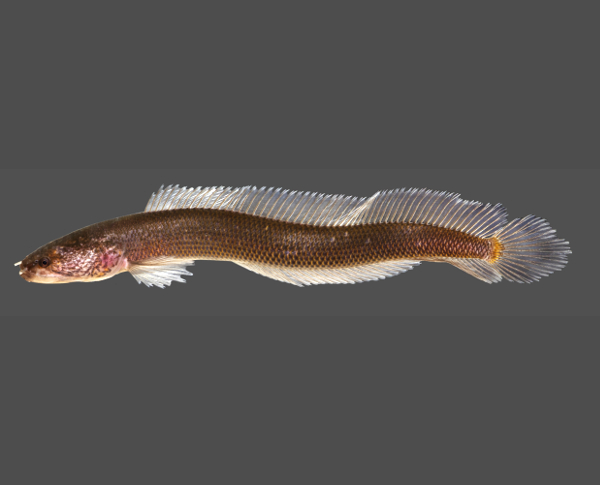MANGALURU: A group of Indian and British scientists have found a mysterious new species of ‘snakehead fish’ lurking in the subterranean waters of Kerala. The unusual finding was reported in a scientific paper published in international animal taxonomy journal Zootaxa on Thursday.
The bizarre fish has been named Aenigmachanna Gollum (Gollum Snakehead) after ‘Gollum’, a character from the ‘The Lord of the Rings’, a creature that went underground and during its subterranean life changed its morphological features. The new fish is not only a new species, but also a remarkable new genus of the snakehead family channidae (which is currently represented by two other genera, Channa in Asia, and Parachanna in Africa).
Snakehead fishes of the family Channidae are predatory freshwater fishes comprising 50 valid species, many of which are important food fishes. Some are also popular in the aquarium fish trade, and others have been introduced around the world with several species becoming highly invasive (especially in North America). Although readily recognized as a member of the family Channidae, the new species, shows several morphological features that are highly unusual or even unique in comparison to its closest relatives. Aenigmachanna Gollum also represents the first species of snakehead to be recorded from subterranean waters.
Normally, subterranean fishes show many unique characters which are interestingly absent in Aenigmachanna. This suggests two possibilities – either it represents a lineage that only recently began a subterranean lifestyle and still has maintained its surface-life features, or that it lives in a habitat in which regular excursions to the surface-water still occur.
“As the Gollum Snakehead was discovered by pure chance in a rice-field not long after the catastrophic floods in Kerala in August 2018, and almost certainly not collected from its natural habitat, we are unable to choose between these two options”, said Rajeev Raghavan, assistant professor at the department of fisheries resource management, Kerala University of Fisheries and Ocean Studies (KUFOS), who led the study and wrote the paper describing this mystery fish.
When local youngster and fish hobbyist, Ajeer, stumbled upon this interesting fish from his rice field near Vengara in Malappuram district of Kerala, little did he realize that the fish will become one of the most unusual species to be described from India in recent times. “The fish had a strikingly distinct morphology from any other species found in India, and the fact that it represented a new species was evident from the moment I saw the specimens” said VK Anoop, a PhD student working at the KUFOS, and a co-author on the paper.
Snakehead fishes are obligatory air-breathers and have a specialized, well vascularized suprabranchial organ and a highly modified vascular system which together makes these fishes less dependent on water. They live in oxygen-poor waters and can also survive out of water for several hours.
“The Gollum snakehead is unable to remain in the water column and has either reduced or even lost its swim bladder, whereas all other snakehead fishes have a well-developed swim bladder, and as highly efficient predators easily maintain buoyancy in open water” said Ralf Britz, scientist at the Natural History Museum, London, a global authority on snakehead fishes, and the lead author of the paper.
The subterranean aquifers and wells of Kerala are a global hotspot for unique species that are often anatomically so derived that their systematic relationships among higher level taxa is difficult to establish. This is the case with fishes of the endemic genera Horaglanis and Kryptoglanis.
“These organisms are no doubt very ancient lineages, separated from their putative closest relatives usually by tens of millions of years. Using advanced molecular tools, we are now almost close to solving their phylogenetic and biogeographic puzzles”, said Neelesh Dahanukar of the Indian Institute of Science Education and Research (IISER), Pune, a collaborator on the study and a co-author of the paper.
Ongoing research at the KUFOS, in collaboration with the Natural History museum in London, and IISER Pune, is hopeful of solving some of these mysteries.
Source: ET
Image Courtesy: Natural History Museum
You may also like
-
New Heat-Based Approach To Cancer Treatment Can Reduce Chemotherapy Doses
-
Scientists Take A Major Step Towards Unification Of Classical & Quantum Gravity
-
India Graphene Engineering and Innovation Centre (IGEIC) Under the Vision of Viksit Bharat@2047 Launched
-
New High-Performance Gas Sensor can Monitor Low Level Nitrogen Oxides Pollution
-
Antidepressant Drug can be Repurposed for Treating Breast Cancer
